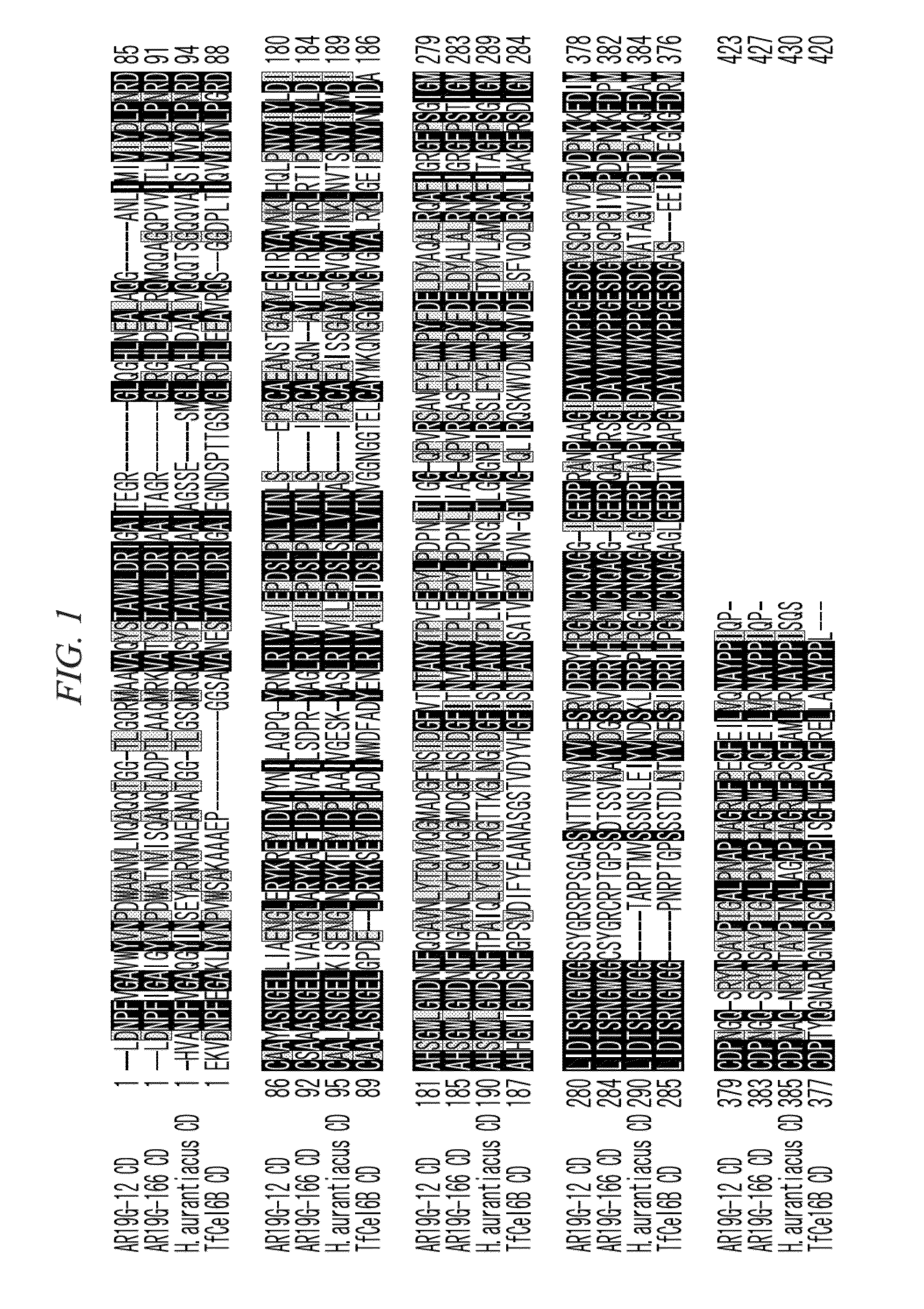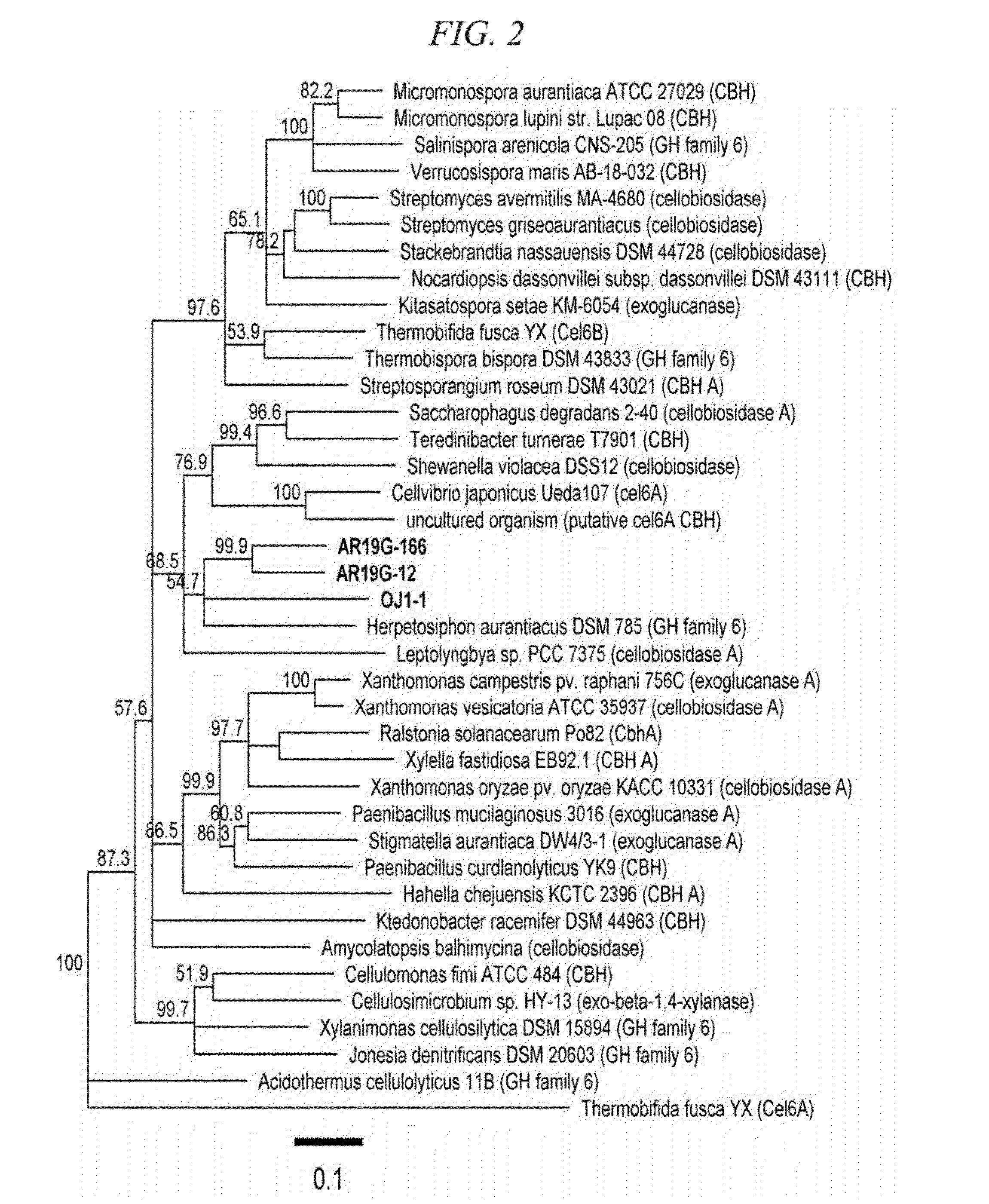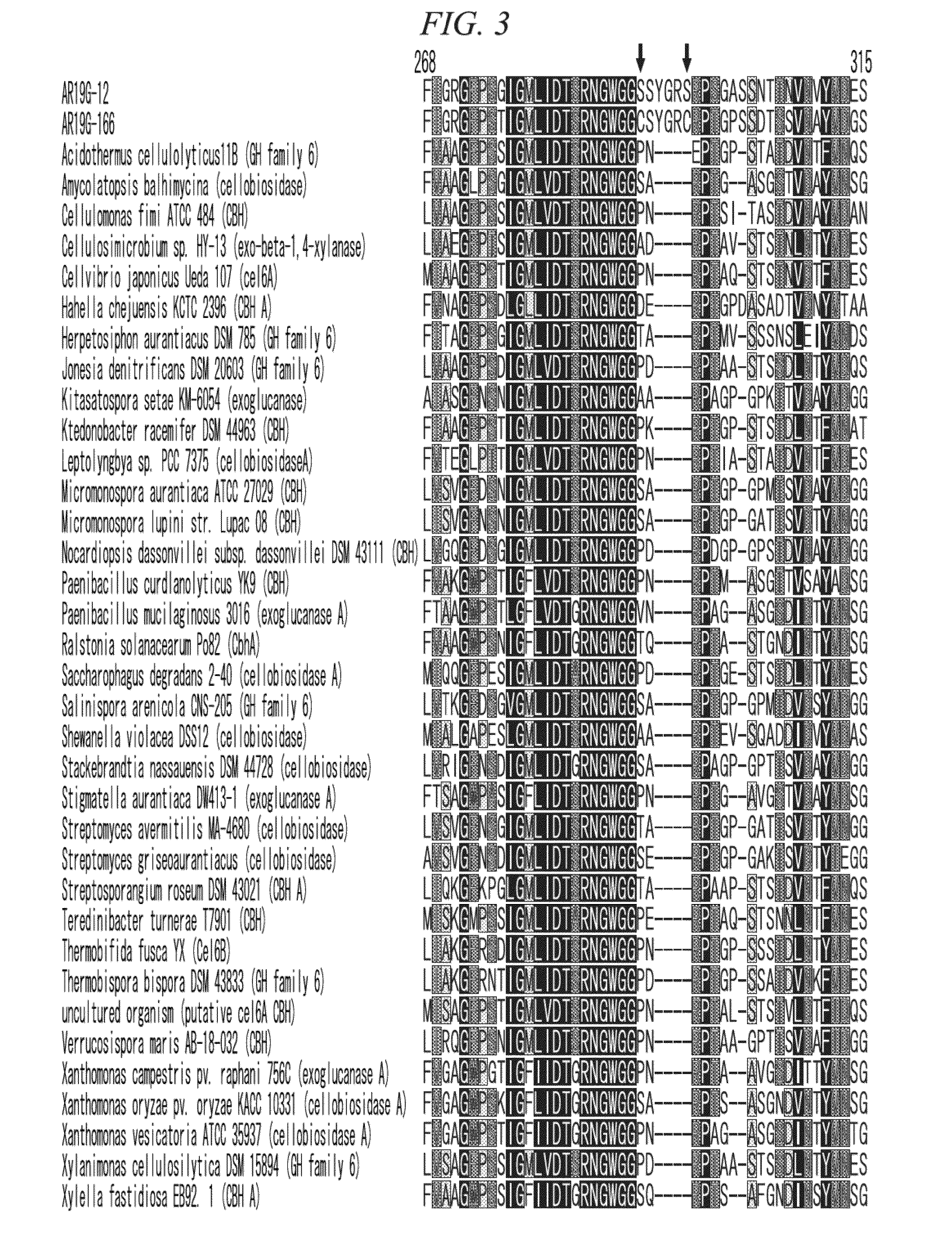Thermostable cellobiohydrolase and amino acid substituted variant thereof
a cellobiohydrolase and amino acid substitute technology, applied in the field of thermostability of cellobiohydrolase enzymes, can solve the problems of difficult degradation or hydrolysis with a single enzyme, complex structure of lignocellulose, and insufficient thermostability of thus obtained mutant cellobiohydrolases
- Summary
- Abstract
- Description
- Claims
- Application Information
AI Technical Summary
Benefits of technology
Problems solved by technology
Method used
Image
Examples
example 1
Cloning of a Novel Thermostable Cellobiohydrolase from Hot Spring Soil
[0107] DNA Extraction from Hot Spring Soil and Whole Genome Sequence (WGS)
[0108]Soil DNA was collected from neutral to weakly alkaline hot springs for the sake of gene search of thermostable cellobiohydrolases (optimum temperature: 55° C. or higher) and extremely thermostable cellobiohydrolases (optimum temperature: 80° C. or higher), and the sequencing of metagenomic DNA of the microbial flora that make up these soil was carried out.
[0109]As neutral to weakly alkaline hot spring soil samples, soil, mud and a hot spring water containing microbial mats were collected from 5 points (metagenomic DNA samples N2, AR19, AR15, OJ1 and H1) at 3 locations in Japan where high temperature hot springs were spouting in the field. The temperature was in a range from 58 to 78° C. and the pH was in a range from 7.2 to 8 at the time of collection of these hot spring soil samples.
[0110]DNA was extracted from 10 g of each of the col...
example 2
[0201]As a means to produce the thermostable cellobiohydrolase according to the present invention in large quantities at a lower cost, the expression of the aforementioned protein in the actinomycete cells into which the AR19G-12L1 gene had been introduced was examined.
Production of Actinomycete Cells Introduced with AR19G-12L1 Gene
[0202]The AR19G-12L1 gene cloned into the pET101 / D-TOPO vector (manufactured by Life Technologies Inc.) was used as a template and transferred into an actinomycete expression vector pHSA81 (Japanese Unexamined Patent Application, First Publication No. 2007-53994) by PCR to be transformed into Streptomyces lividans TK24 strain. The transformation was carried out in accordance with the method (protoplast polyethylene glycol fusion method) described in “Genetic manipulation of Streptomyces: a laboratory manual”. After the selection of positive clones by colony PCR and incubation in an YEME medium (0.3% yeast extract, 0.5% Bacto peptone, 0.3% malt extract, 1...
PUM
| Property | Measurement | Unit |
|---|---|---|
| Temperature | aaaaa | aaaaa |
| Fraction | aaaaa | aaaaa |
| Fraction | aaaaa | aaaaa |
Abstract
Description
Claims
Application Information
 Login to View More
Login to View More - R&D
- Intellectual Property
- Life Sciences
- Materials
- Tech Scout
- Unparalleled Data Quality
- Higher Quality Content
- 60% Fewer Hallucinations
Browse by: Latest US Patents, China's latest patents, Technical Efficacy Thesaurus, Application Domain, Technology Topic, Popular Technical Reports.
© 2025 PatSnap. All rights reserved.Legal|Privacy policy|Modern Slavery Act Transparency Statement|Sitemap|About US| Contact US: help@patsnap.com



